Last Updated on August 5, 2021
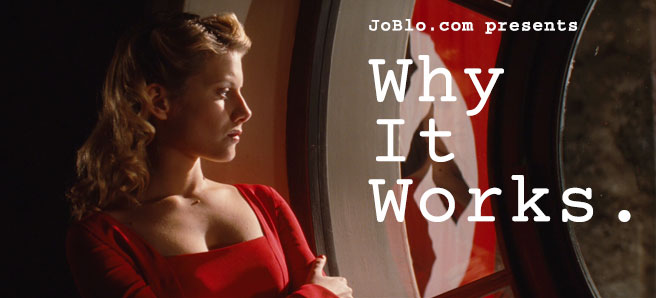 Why It Works is an ongoing column which breaks down some of the most acclaimed films in history and explores what makes them so iconic, groundbreaking, and memorable.
Why It Works is an ongoing column which breaks down some of the most acclaimed films in history and explores what makes them so iconic, groundbreaking, and memorable.
****SPOILERS AHEAD****
Quentin Tarantino's THE HATEFUL EIGHT hits theaters on Christmas Day, and early reports suggest we'll be getting the celebrated, unsettling, and polarizing film we'd expect from the man. This is Tarantino's third period piece in a row, and since 2009's INGLOURIOUS BASTERDS launched this new chapter in the filmmaker's career, it seemed an appropriate subject for the last Why It Works of the year. INGLOURIOUS BASTERDS rewrites history, blends genres, and features some of the most tense, unforgettable scenes in recent memory. Here's why it works:
WHY WE LIKE THE CHARACTERS:
Not many films open with a twenty minute scene featuring the bad guy and no other main characters, but not many films are INGLOURIOUS BASTERDS. In a wish fulfillment film about killing Nazis, Tarantino does the unexpected by placing so much emphasis on a high ranking member of the SS. Colonel Hans Landa is intelligent, learned, charming, amusing… and f*cking evil. As the opening scene progresses, we hear the philosophy of the Third Reich as told by Landa and see the terrifying joy he takes in his work, but we also spend enough time with the character to find a guilty pleasure in watching him do his thing. There's no doubt we want to see this guy with a bullet in his head, but humanizing the Nazis through this character makes them that much more terrifying. It's also refreshing whenever a filmmaker can keep the traditional "bad guy" scene from feeling contrived. To keep things from getting too heavy, though, we are treated to a cartoonish Hitler and Goebbels, because f*ck those guys.
 "Ohhh! That's a bingo!" A much deserved Oscar win.
"Ohhh! That's a bingo!" A much deserved Oscar win.
Speaking of cartoonish, the Basterds aren't exactly the most realistic of characters, either. Lieutenant Aldo Raine and company represent the pure fantasy part of the film, in which we get to see Jewish-American soldiers "doin' one thing and one thing only… killin' Nazis." Tarantino is smart enough to know that the Basterds are better used sparingly than than to carry a film of this weight. This is where Shosanna comes in. The only Jewish survivor of Landa's visit to the LaPadite residence, Shosanna has taken the name of Emmanuelle and runs a cinema in Paris. Shosanna's tragic history, her rigid relationship with Private Zoeller, and her tenacious attitude make her the character in which we find ourselves the most invested. While the Basterds are seeking general revenge, Shosanna seeks a personal one.
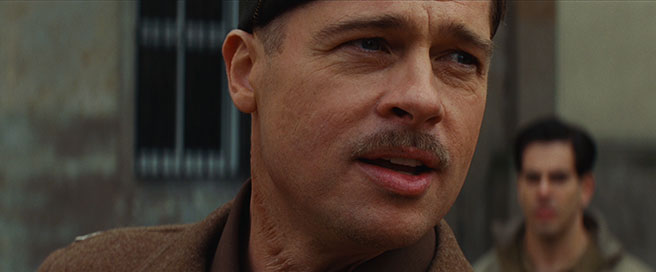 "And when the German closes their eyes at night and they're tortured by their subconscious for the evil they have done, it will be with thoughts of us they are tortured with. Sound good?"
"And when the German closes their eyes at night and they're tortured by their subconscious for the evil they have done, it will be with thoughts of us they are tortured with. Sound good?"
WHY WE CARE:
One word: tension. With this film, Tarantino has proved himself to be a master of unease. For one, nearly every scene in this film features a character hoping to not be discovered. Will Landa find the Jews beneath the floorboards? Will Zoeller learn Shosanna's identity? Does Landa recognize Shosanna? Will the Germans in the tavern catch on to Hicox and Operation Kino? Will Raine and company be able to pass for Italian filmmakers? Will Shosanna get away with her plan? If this constant nail biting isn't enough, many of these scenes are ten to twenty minutes long, making the tension that much more unbearable. What makes these scenes work, though, is not only the constant push and pull of the tension but also the humor. Landa pulling out a comically large pipe or dolloping cream on his strudel make us giggle momentarily only to then become even more unsettled by the oddness of the situation. Beyond all of this is the overarching plot of Operation Kino and Shosanna's revenge, of course, but neither of these is introduced until about halfway into the film, so it falls upon the individual scenes to keep us enthralled until the larger plot unfolds.
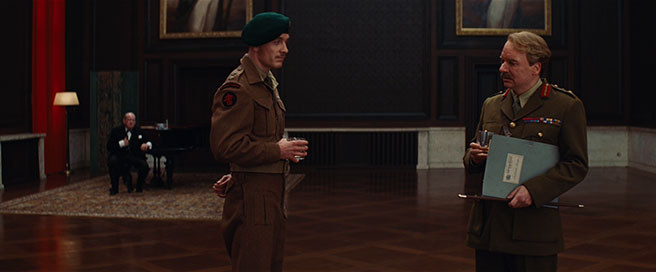 More movie scenes need Churchill hanging out in the background.
More movie scenes need Churchill hanging out in the background.
WHY WE'RE SATISFIED:
It's a bit disappointing when a movie ends without Hitler getting shot in the face (I thought this was a serious flaw in BRIDGET JONES: THE EDGE OF REASON). It's one thing to build tension, but it's quite another to deliver an appropriately satisfying release. While the individual scenes offer release, many of them aren't what we were after. Landa finds the refugees, Hicox gets blown away, Bridget von Hammersmark and her Italian entourage are found out, and Shosanna shows just enough sympathy for Zoeller to get herself killed. This is how Tarantino plays with the audience. Not everything gets to end perfectly. It's too easy, too predictable, and makes the film less rewatchable. That said, while INGLOURIOUS BASTERDS is full of complications, we still get our just desserts in the end. Shosanna's plan and Operation Kino succeed (if not exactly as intended), we get an extended look at Donowitz and Ulmer decimating Hitler's face, and Landa only escapes after getting the classic Basterd makeover. In a revisionist history, wish fulfillment film, a satisfying ending is not just necessary, it's the point.
 "I have a message for Germany."
"I have a message for Germany."
WHY WE REMEMBER:
Upon my first viewing of INGLOURIOUS BASTERDS, I remember leaving the theater thinking about all the issues I had with the style inconsistencies, music choices, pacing, and who knows what else. While those feelings may be frustrating, they seem to be almost necessary to make a work of art stand out. We've all seen films that are so perfect and well-made that nothing about them sticks with us, and we forget about them a few days later. While I'm certainly not condoning making bold choices simply for the sake of being different, Quentin Tarantino walks the line between being a technically consummate filmmaker and, well, being ridiculous. It might take you out of the film when Samuel L. Jackson is suddenly narrating a World War II picture, but you're sure as hell going to remember it far more than some generic narrator reading the same lines. As for the technical side of things, we're treated to brilliant dialogue, incredible acting from an international cast, viscerally stirring music, beautiful cinematography, and, of course, an ending that throws history on its head and makes us wonder why no one's done this before.
Thoughts? What else worked for you? What didn't? Strike back below!
If you have any movies you'd like to see put under the microscope, let us know below or send me an email at [email protected].



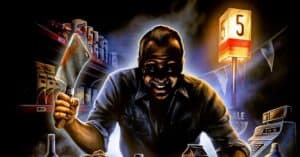

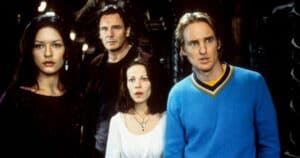




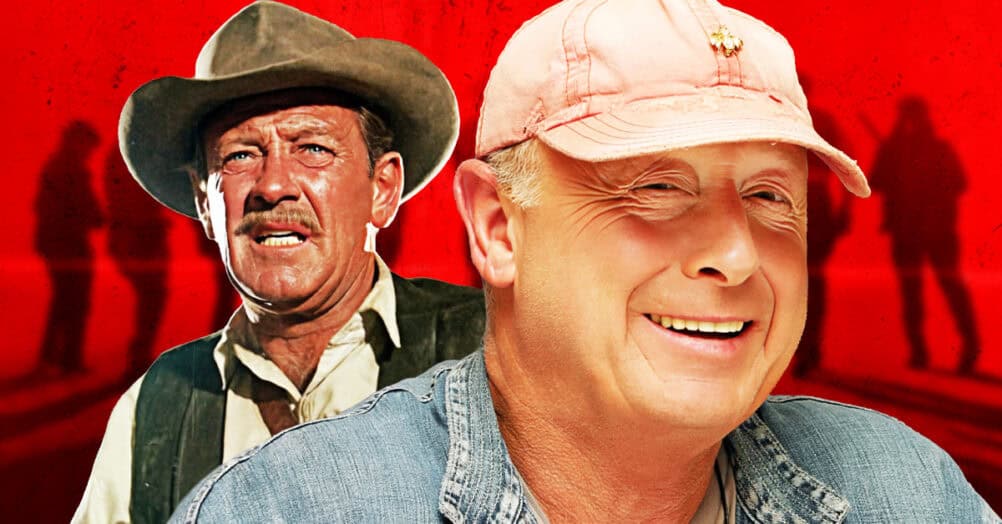

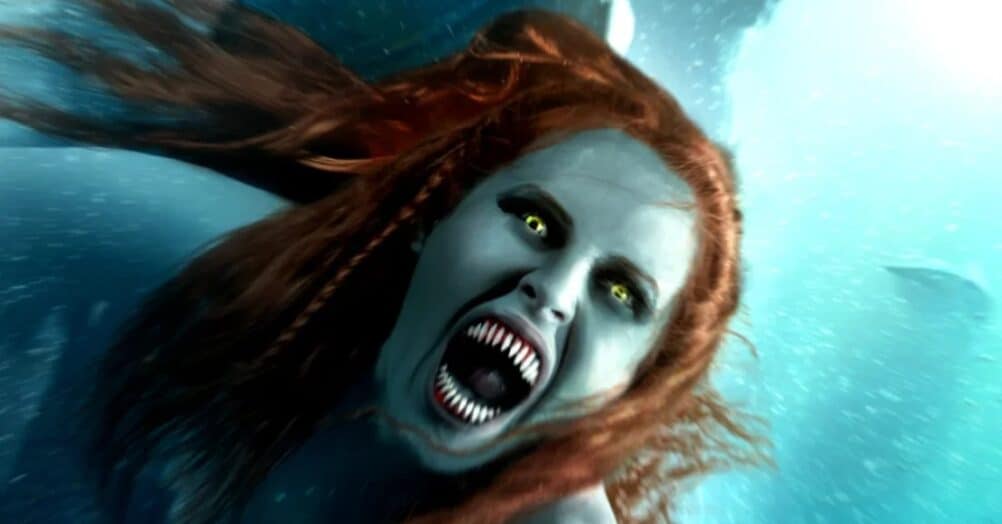
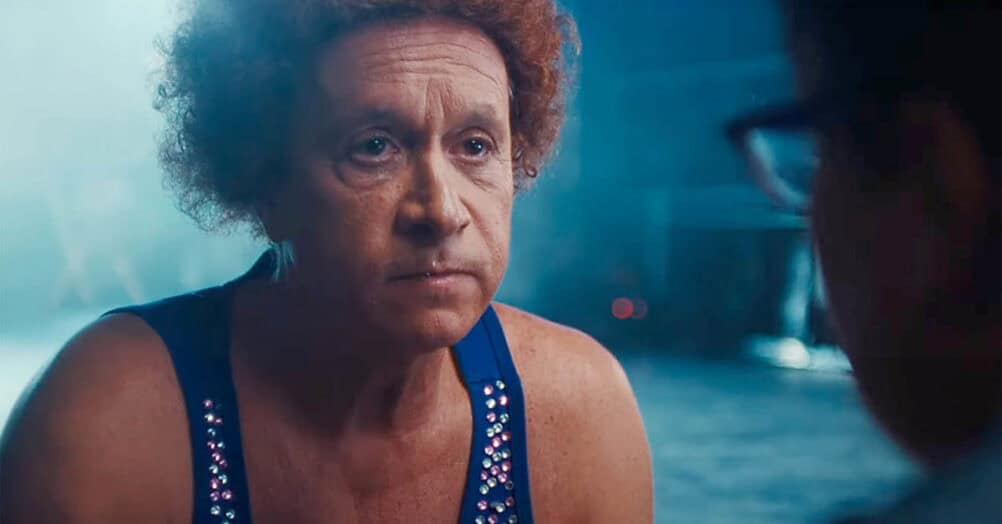
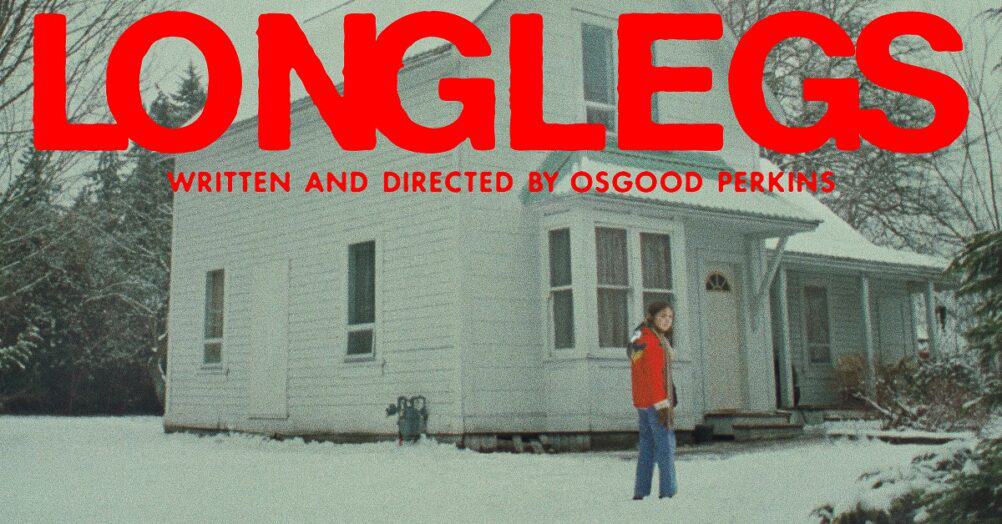
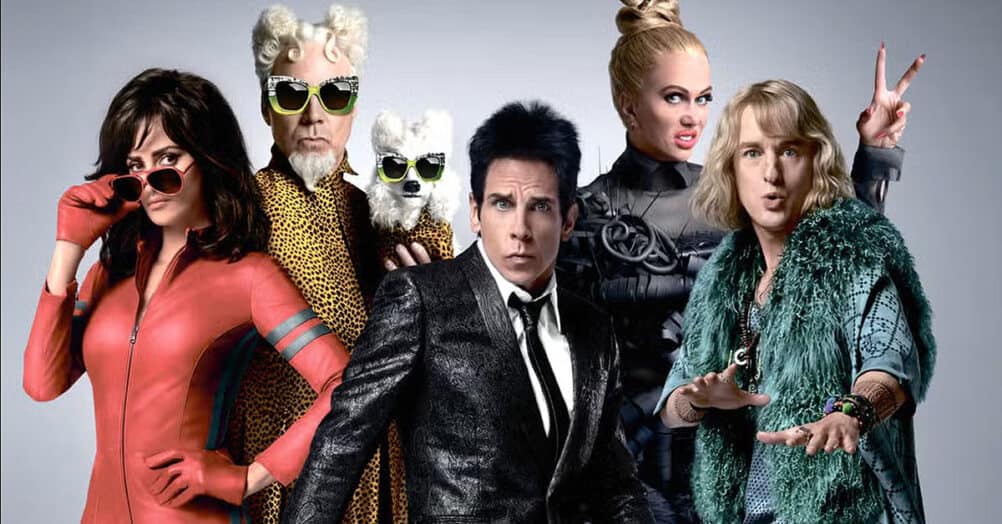
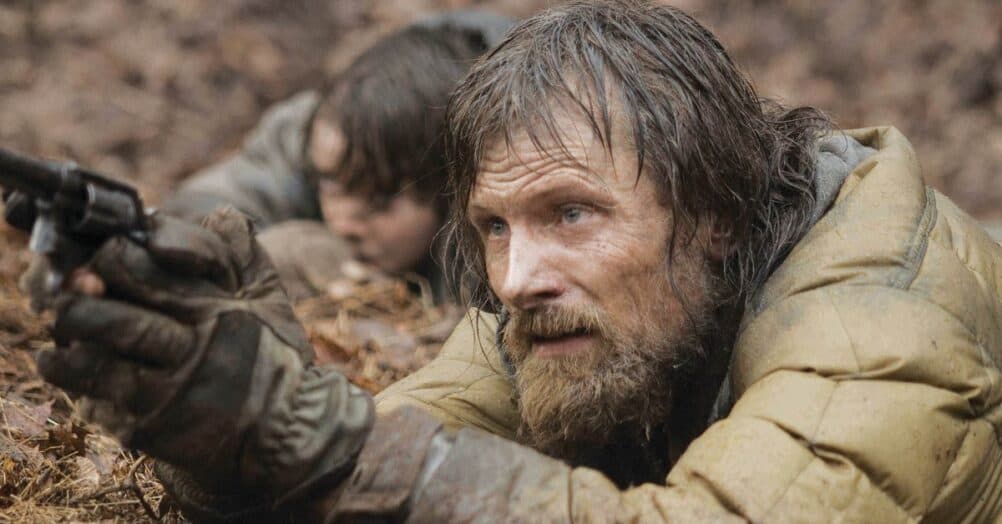

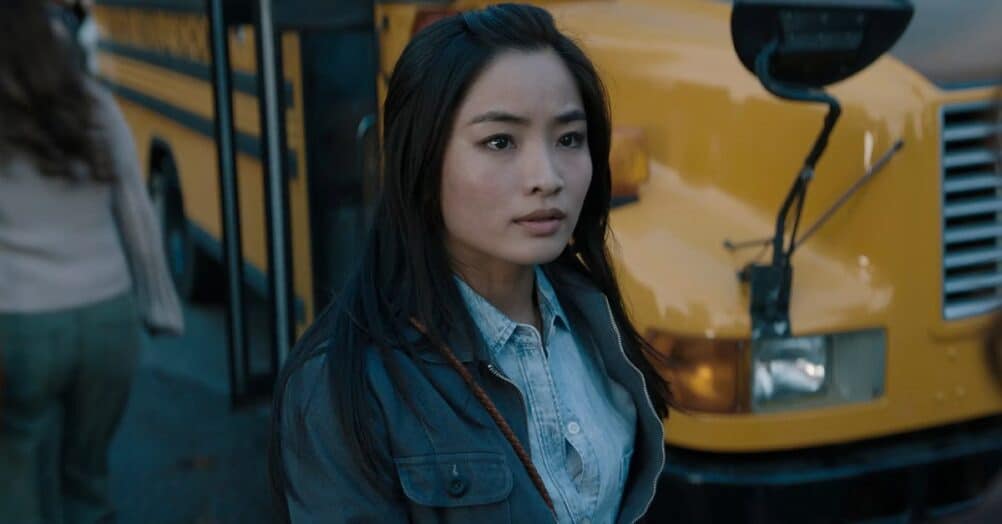
Follow the JOBLO MOVIE NETWORK
Follow us on YOUTUBE
Follow ARROW IN THE HEAD
Follow AITH on YOUTUBE